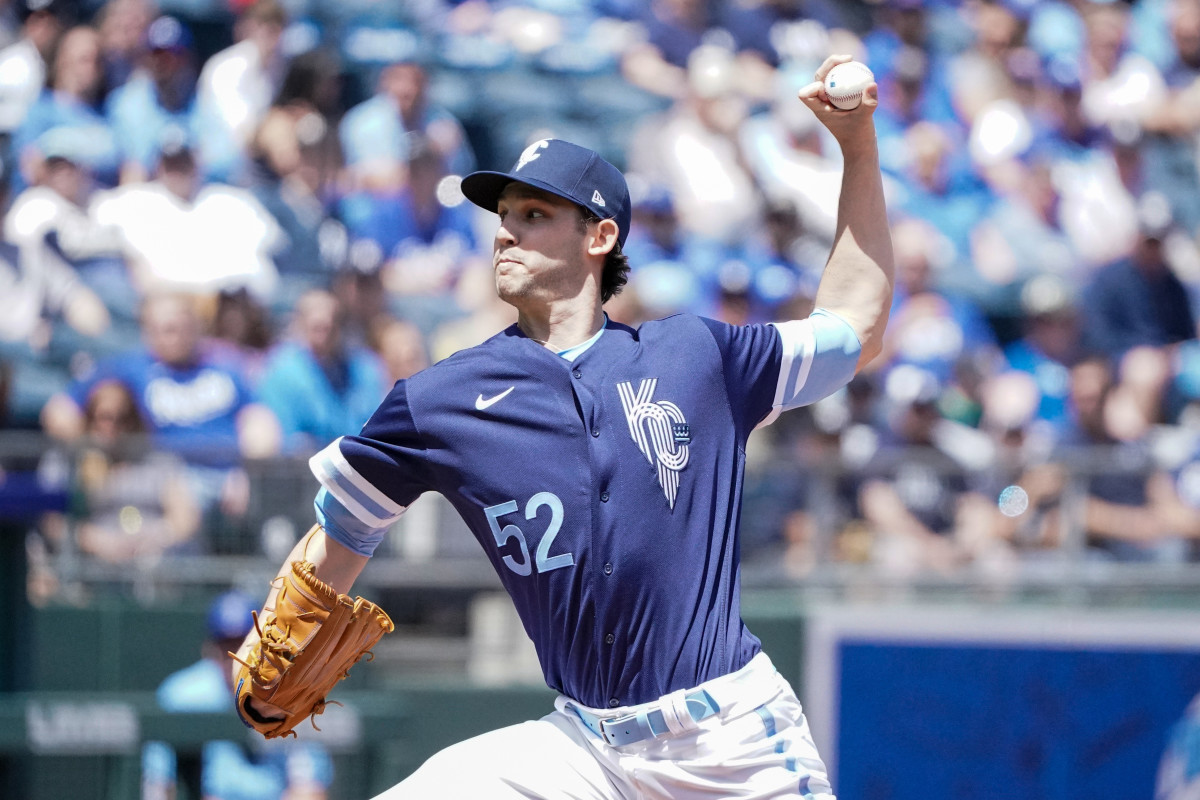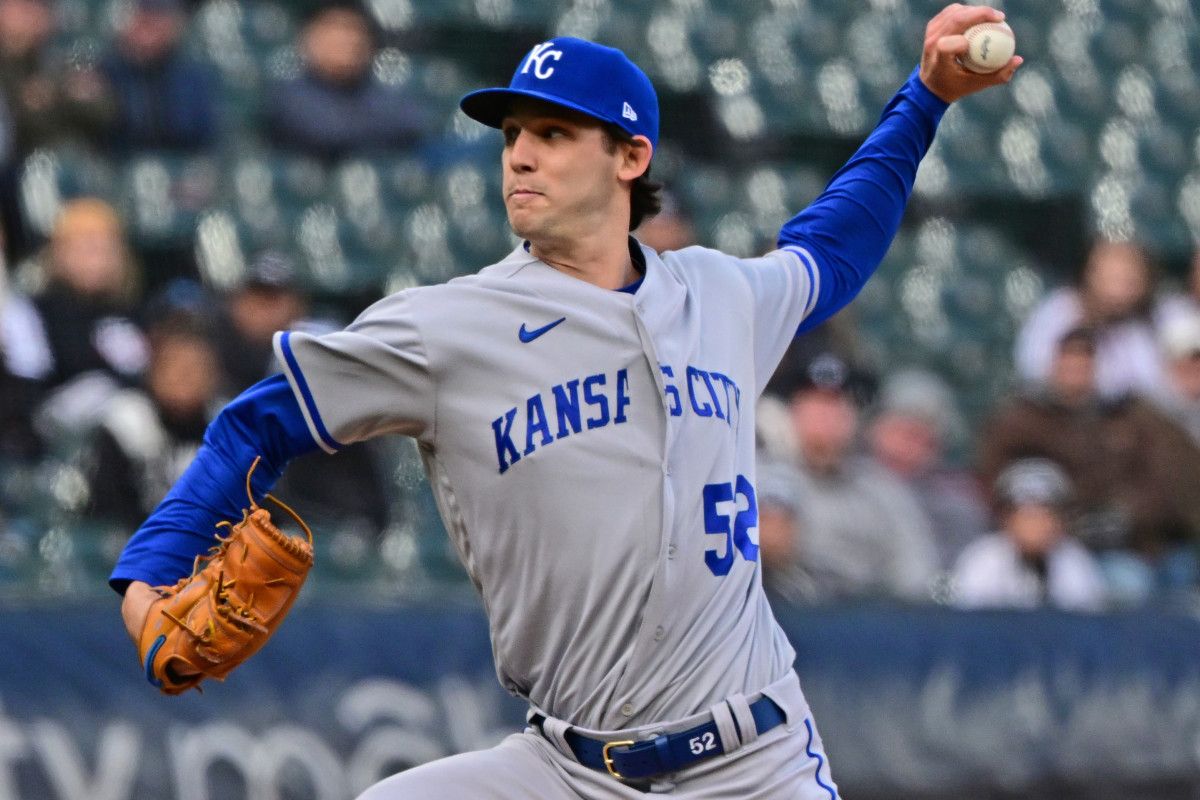To Make a Real Leap, Daniel Lynch’s Fastball Development Is Key
The Kansas City Royals' crop of young pitchers is producing mixed results in 2022, and Daniel Lynch is no different. Lynch's season has had its ups and downs, but he has been statistically better this year than in 2021 across the board. His per-nine stats are better, with his K/9 increasing to 8.16, his BB/9 staying the same and fewer home runs being given up overall (1.19 HR/9 last season, 1.05 HR/9 this season).
To go a little deeper, the batted ball profile for Lynch has improved too. He's giving up fewer barrels, producing a touch more weak contact and less solid contact as a result. Even the plate discipline values are similar to last year, with the exception of O-Swing% (swings at pitches outside the zone) going up 8% to 37.7% and his O-Contact% (contact made on outside pitches) going up 8% as well to 62.1%.

It isn't ideal for batters to make more contact on pitches outside of the zone, but that is mostly due to Lynch's pitches being not great outside of his slider and changeup. The run values for Lynch's repertoire are not ideal, minus the slider, as every pitch has a run value of 1 or above with the slider being worth minus-3 runs.
If we look at opponents' average and SLG on Lynch's pitches, his best ones are (unsurprisingly) his slider and changeup. His slider has given opposing hitters fits, as they are hitting .197 against it with a SLG of .333. The changeup is slightly worse, with an opposing batting average of .273 and a .455 SLG, but the expected values look better. He's been slightly unlucky with the changeup.
The biggest issue for Lynch is his fastball. Hitters are batting .321 and posting a .464 SLG against it with a wOBA of .375. That isn't good, but it is at least performing better than last year. It seems that Lynch's fastball is the main problem for him early in his career, so let's get into a physics lesson.

In baseball, the Magnus Effect explains how a baseball opposes gravity to keep the ball in the air longer. How does this apply to Lynch's fastball? Well, good fastballs don't drop a lot and they tend to "rise." Lynch's fastball drops more than average and has an average break. Another issue Lynch has is his fastball's active spin of 91%. This means that 91% of his spin rate affects movement, which is below-average for an MLB fastball.
This, in a nutshell, says that Lynch throws a relatively straight fastball that has very little movement and drops where batters expect it to drop. Another former top prospect that had this issue was Corbin Burnes, who Foolish Baseball just did a video on. There is a nice bit where Burnes talks about making adjustments to hand position and some other things, and now he's one of the best pitchers in baseball.
Lynch has seen a lot of improvements this season, but his fastball simply hasn't been good at all since he's been up in the majors. Some adjustments are needed for him to have more success at the big-league level with the Royals. The steady improvements are nice, but if he is to thrive, his fastball may need to be tweaked a little bit.
